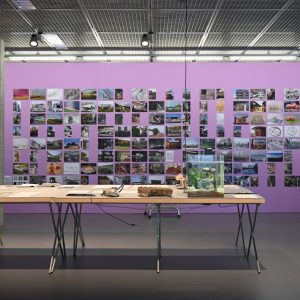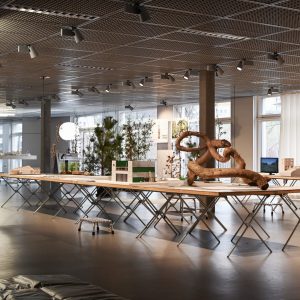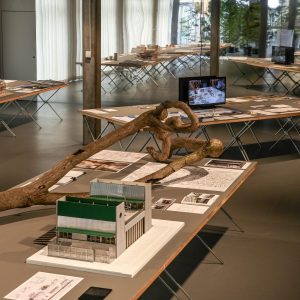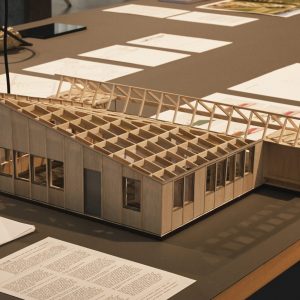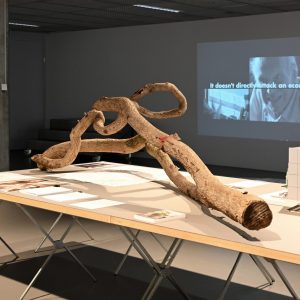
SYMPOIESIS
ARTS OF PRACTICE IN THE ECOLOGICAL CITY
From 28.02 to 15.05.23
Archizoom, SG building, EPFL
Ecological culture is becoming increasingly prominent in the design of the city today. It is the pivot that enables us to articulate new ways of looking, proceeding and operating, generating a new set of arts of practice in and for the ecological city.
Curation
Archizoom & UR, architecture and urbanism office.
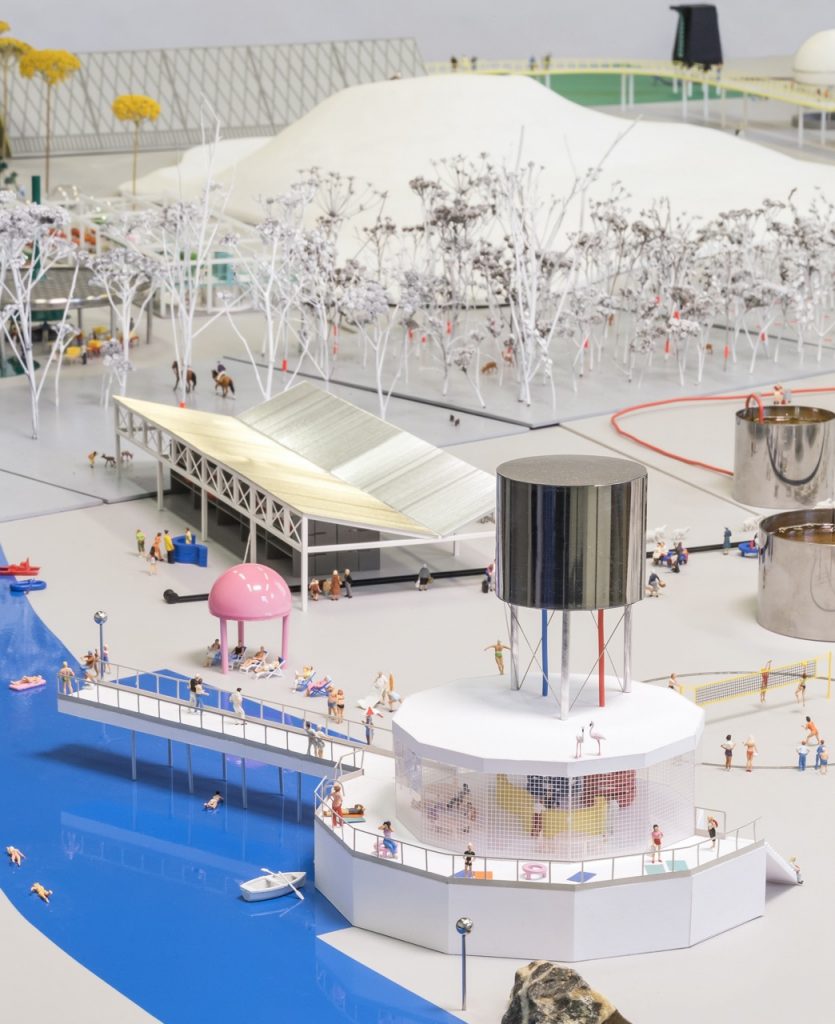
Model produced by UR, Peaks, Altitude 35 – with contributions from ZEFCO, Marie Cazaban-Mazerolles and Julien Claparède-Petitpierre and photographs by Antoine Espinasseau for the exhibition Augures, commissioned by Djamel Klouche, BAP! 2019
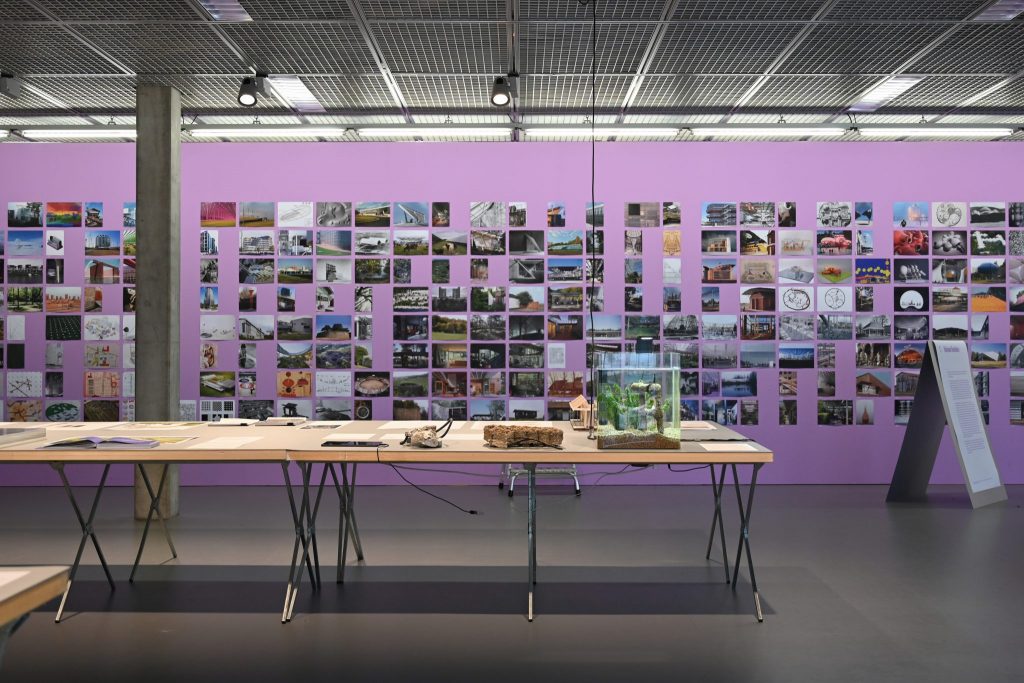
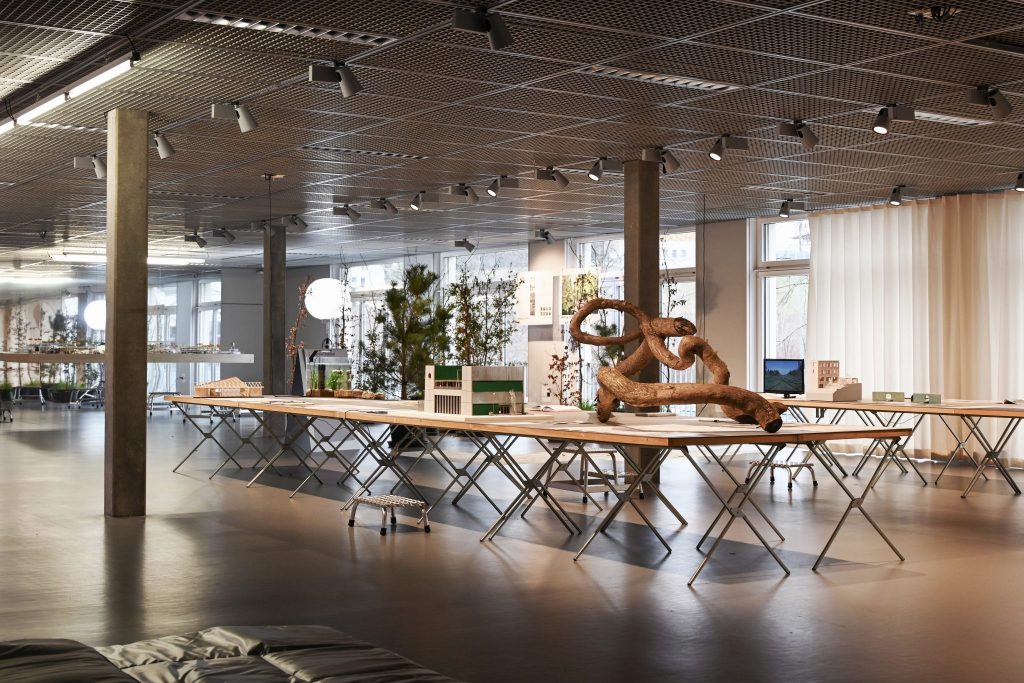
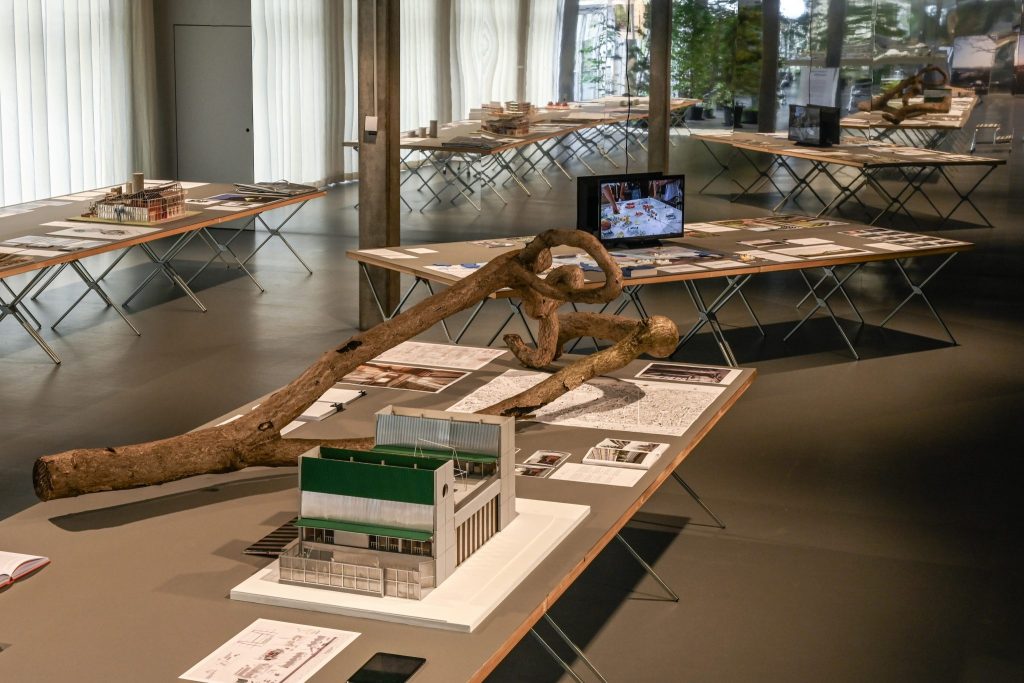
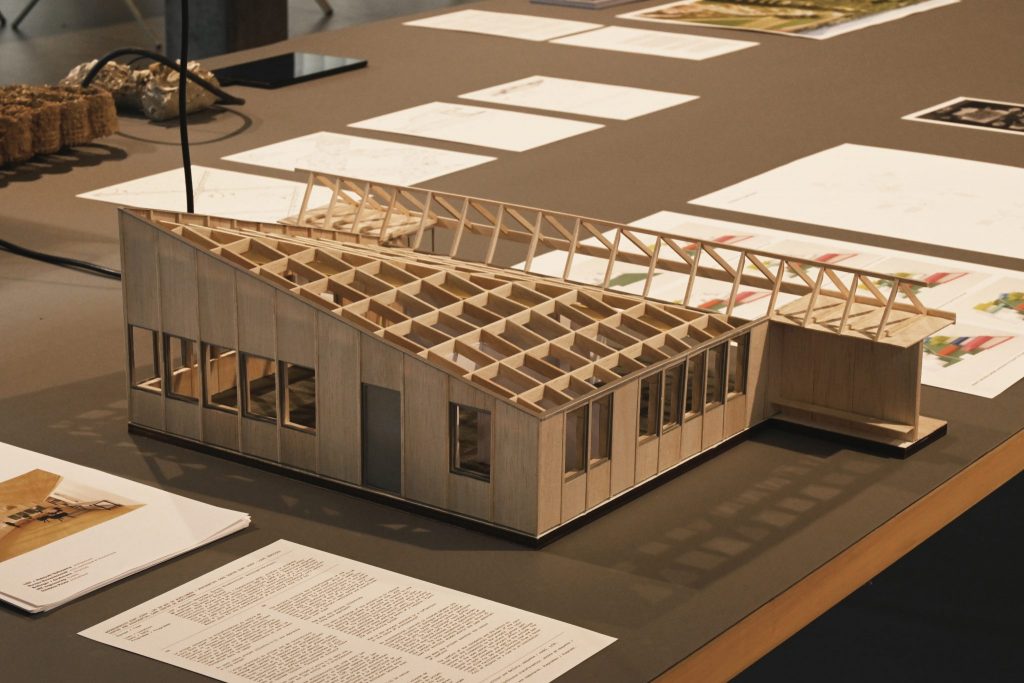
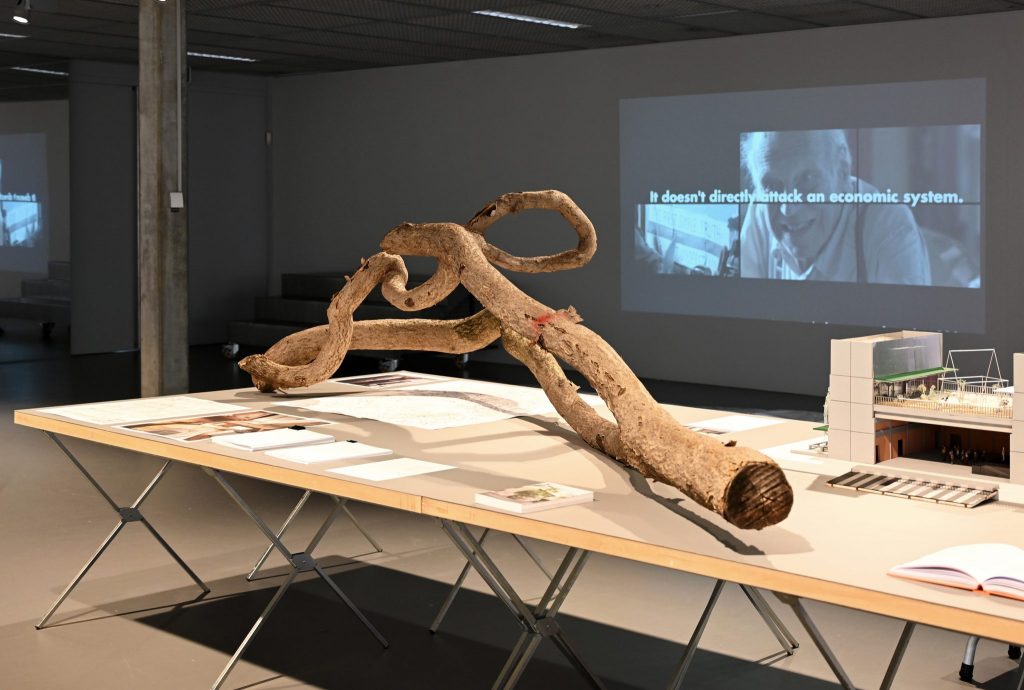
EVENTS
Vernissage! Monday 27 February, 6pm, fr
Opening lecture by the curators
Gaétan Brunet & Chloé Valadié (UR)
Guided tour Monday 27 March, 5pm, fr
by the curators, on registration
Dialogue Monday 27 March, 6.30pm, fr
Ecological culture * project culture
Pierre Charbonnier & Djamel Klouche (l’AUC)
Dialogue Monday 17 April, 6.30pm, fr
Form, language, relationship
Sophie Dars (Accattone) & Sébastien Martinez-Barat (MBL architects)
Guided tour Monday 8 May, 5pm, fr
by the curators, on registration
Dialogue Monday 8 May, 6.30pm, en
Acting with uncertainty
Ido Avissar (LIST) & Mio Tsuneyama (studio mnm)
Workshop for children from Tuesday 11 to Friday 14 April
Cadavre exquis of the ecological city
organized with Anna Pontais (SPS), on registration
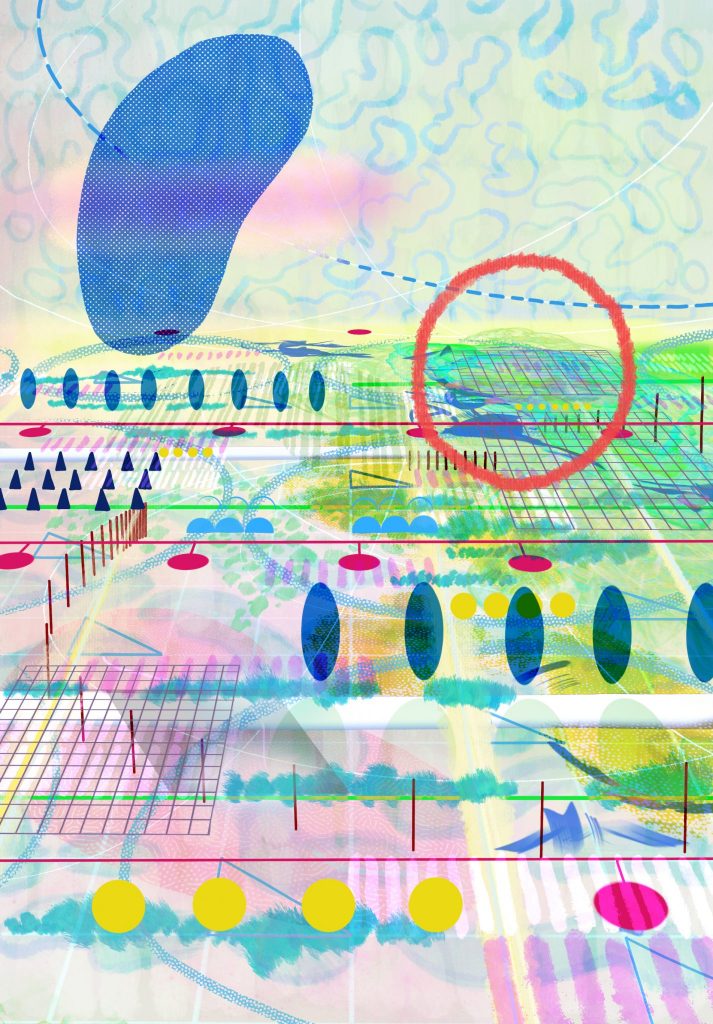
SYMPOIESIS
Sympoiesis comes from the Greek ποίησις / poíēsis, ‘creation, production’ and the prefix σύν / sún ‘with, together’. Poíēsis refers to the study of the potentialities inscribed in a given situation, heralding a new creation. Literally then, sympoiesis is by consequence a making-with or making-together. A making that is not be the autonomous affirmation of a vision, but the revelation of potentialities or the materialization of an as yet unrevealed existence.
INTRODUCTION
The transformations that our societies and environments are currently going through are jeopardizing our way of being in the world. As such they challenge our capacity to set out projects or, more concretely, to produce prospective visions and to anchor tangible ambitions in them.
This context encourages us to imagine new ways of acting that enable us to integrate uncertainty. We must go beyond torment – not undergo – and invent actions capable of fitting into the climate regime that is taking shape.
Moving from a system of autonomous objects to one of related objects opens up new perspectives on interactions, forms and processes. Organized around these three chapters, the exhibition shows how ecological culture can colour, inform and renew project culture.
Marie Cazaban-Mazerolles et Julien Claparède-Petitpierre
Make do, make with
What exactly has been happening on Earth in the last quarter of a millennium?
The Anthropocene.
Anthropo-what?
The Anthropocene.
We already live in it, so let us get us to this ugly word as well as the reality that it names.
Thus begins the essay that historians Christophe Bonneuil and Jean-Baptiste Fressoz devoted in 2016 to the “Anthropocene event”. This ugly word, as they call it, has since been on many lips and, despite the criticisms levelled at it, seems to have established itself as the name for the anxious period we live in. Marked by significant alterations to the bio-geo-physical systems that make up our environment, this new era is also characterized by the elevation of humankind – anthropos – to the level of a full-fledged geological force whose imprint can be seen in the stratigraphic layers of our planet. As early as 1990, the philosopher Michel Serres expressed his concern about the signature left by humankind, not so much in the ground as on its surface in the form of large built-up areas – “vast and dense human plates” – now visible from space and comparable, in terms of their influence on the climate, to such huge formations as oceans, deserts and mountain ranges. Thirty years later, in 2020, we learned that the anthropogenic mass – i.e. the weight of all man-made artefacts and aggregates and still in use (not counting, therefore, demolished or discarded products) – now exceeds that of the entire biomass (i.e. the weight of all living organisms, including humans). Instead of celebrating this piece of information as irrefutable proof of our power and of the triumph of our civilizing odyssey, we feel a nauseating sense of guilty obscenity. For this maximum extension of our sphere of influence comes at a price, one that just seems to keep on going up: the Earth system is rebelling, and while we have already made the planet unliveable for many other creatures, more and more human groups now have to endure the degradation of their material conditions of existence. The fate of future generations is uncertain, to say the least. Under these conditions, the phrase “brick by brick” leaves a bitter aftertaste. The finger now generally points at human activity, while the act of building and manufacturing – costly in fossil fuels, predatory with regard to natural resources, and sometimes ecocidal – is more particularly the subject of a suspicion that is difficult to sweep aside easily. From this viewpoint, a form of incapacitating bad conscience is probably not the least of the problems facing the architect, the urban planner or the landscape designer who is even slightly lucid about the new ecological regime in which he or she lives and works. Hence the need to imagine and experiment with new ways of making that enable us to resist the impossible alternative: giving up, preventing oneself, abstaining – or continuing to do as before, as if it were business as usual.
In Western culture, the first figure of the “maker” we have inherited is that of the demiurge: the Platonic deity who creates the universe and gives to indeterminate matter the form and order he previously imagined for it. Of divine origin, the demiurgic model promotes an art of making and fabricating understood as the act of imposing his power, desires and intentions on a malleable world. The demiurge
is Pygmalion sculpting Galatea; the Great Engineer; the Artist, the Artisan or the Architect – but always with a capital A.
Long celebrated, this character now appears to us bloated with an illusory and harmful arrogance. For the world – the Earth – far from being able to keep passing for pure inert matter that can be manipulated at will is stirring and retaliating. As Michel Serres put it nicely, after the Copernican revolution had shown us that the Earth moves, we are now witnessing a second revolution: the Earth is moved. It reacts, and the creations that the demiurge has introduced into the world are caught up in futures that escape his control and plans. A new figure emerges in the shadow of the demiurge: the sorcerer’s apprentice. In the poem composed by Goethe that gave birth to this character, a young sorcerer enchants a broom to do his chores. But once the broom has completed its task, the young man realizes he ignores how to stop it. The sorcerer’s apprentice thus embodies a human being overwhelmed by the power he exercises over the world and confronted with the emancipation of his creations. But if, in Goethe’s work, the old sorcerer breaks the spell and renders the broom inert, it is unlikely that anyone will be able to appease the planet: the Earth is not a broom, and this simple difference is enough to mark the defeat of demiurgic making.
The figure of the bricoleur, who appeared much later in our culture, offers an alternative model. According to the latter, the project does not come first, as with the demiurge, but emerges in the course of a second phase from the material already at hand. The bricoleur works from a composite repertoire of residues from previous works and does not know in advance the result of his work. The anthropologist Claude Lévi-Strauss thus contrasts him with the engineer (a demiurgic avatar) who imposes his project on nature from the outside, whereas the bricoleur always acts in and from the world: “the rule of his game, says Lévi-Strauss, is to always make do with ‘the means at hand’”. If we are to believe the biologist François Jacob, the embodiment par excellence of this art of bricolage is not a divine figure but the process of natural evolution itself: a messy and persevering experimenter, who cuts here and lengthens there, “seizing every opportunity to adapt progressively to its new use”. A new way of making emerges here, which is a first form of “faire avec”, “making do”: a way of accommodating the remains, of composing with what exists, of taking its presence into account.
But “faire avec” can have another, perhaps more decisive meaning. That of “making with”, making with several people, a collaboration between several agents, several acting forces. In this model, a world once reduced to the status of material or of intention of the action is recognized in turn as an actor. For Catherine and Raphaël Larrère, who associate this art of making-with with the figure of the pilot, it is less a question of commanding things than of influencing them: “We deal with nature as a partner, we collaborate with it… we negotiate, we sometimes even trick it. As if we were trying to establish with nature and the natural beings that we manipulate the social relations that enable humans to live together in the communities that they make up.” If they imply getting rid of the fantasy of our absolute control, these ways of making-with are not for all that less demanding in terms of know-how or technology. It would be a mistake to see in them an attitude of wait-and-see or renunciation in a disguised form. Although they are ancient (without them, there would be no breeding or agriculture), they are not archaic (witness genetic modification techniques and most nanotechnologies, which fall within their paradigm). And if they too are likely to produce unintended and potentially damaging effects (as in the tale of the sorcerer’s apprentice), it is because of the limited knowledge and skills of those who implement them rather than because of an excess of power and indifference to the world. But what distinguishes them above all is the fact that they envisage action as a partnership and, consequently, the attention paid to the agency and specificities of the bio-physical fabric with whose help – and no longer in which – it is now a question of making worlds.
In her book Habiter en oiseau, the philosopher Vinciane Despret writes that there is no way of living that is not first and foremost a way of living-with. Perhaps it is time to assert that there is no way of building and developing that is not first and foremost a way of constructing-with and developing-with. Far from the divine solitude of the demiurge, there are only makers-with here, new embodiments of a way of making conceived as a “sym-poiesis” that is achieved, in the words of Isabelle Stengers, “thanks to and at the risk of others”.
Creating a project
Talking about a project means talking about time, the time of action. But time is a funny thing if you consider it from the viewpoint of action. We owe it to Charles Sanders Peirce, the founder of American pragmatism, to have highlighted this issue at the start of the twentieth century, thus revealing the heterogeneity of time.
The past refers to everything that has taken place, everything that has been done and that we can no longer act upon. We can adopt different attitudes towards it – reject it, accept it, want to correct it, forget it, overcome it, take pride in it, hide it – but we can never undo it. The past is stubborn.
The present is the time of action, the moment when the possibilities of the future transform into the facts of the past. It is the moment when the project is embodied, at the risk of becoming bogged down in reality and of losing the flexibility and lightness of the imagined future worlds. The present is the place where all the constraints and resistances are met. It is the place of the ultimate test. Often assimilated to an evanescent point, the present is nevertheless devoid neither of thickness nor of heaviness. It is still loaded with the weight of past projects that have landed and are ageing in the present, revealing their effectiveness or incongruity. The present is inhabited by the past: it is supported by the well-established mechanisms that continue to stabilize it, but it is also burdened by stigmas that refuse to disappear and which, at times, like an infected wound, just keep getting worse. If the past is destined to fade away
in an immemorial limbo, it remains present and active for a long time. Seen from the present, the past is the sum of assets, inertias and constraints that linger, circumscribing the context of action and life of an era. Therefore, the present is not a blank page, open and free. But neither is it already done, closed, fixed by the glue of the past.
The future itself is not a blank page. Already reduced, fettered by the permanency of the past and the demands of the present, the future nevertheless remains the time of possibilities, at the risk of losing its outlines. For what is possible is what hasn’t been done, what hasn’t been decided; but it is also what can be realized, what can meet reality and be inscribed in it. Neither effective nor impossible, what is possible is never certain. Nevertheless, the future is also the time of impossibilities that seem possible. It is the place of utopian worlds and dystopian terrors. If the past is riveted to the present by the obstinacy of traces that are slow to disappear, the future is pried open by imaginations that are quick to wander. The history of science and technology is, in a sense, the history of the methods developed to find one’s way around this uncharted area. To tame the future is to learn foresight, forward vision. Forecasting, predicting, simulating: every effort is made to circumscribe the possibilities, to measure the future. Methodical experimentation has based scientificity on replicability: the same initial conditions produce the same results, the variables are controlled, the results are pre-drawn, expected, controllable and controlled.
The future is a dangerous thing. When Edward Bernays – “the father of public relations” in the US and a pioneer of propaganda techniques – was tasked with promoting the 1939 New York World’s Fair, he based his campaign on the representation of a radiant future made accessible thanks to the development of the consumer society. His campaign presented the ideal world of tomorrow, that of a free, prosperous democracy, flourishing in the abundance of goods and rights. Described with a great many images, speeches and films, this ideal was presented as the horizon towards which a certain technical progress carried by a capitalist system above all suspicion would irrepressibly lead. Bernays’s technique here was to make the concerns of the present invisible by talking about the future. For the future, if you want to believe in it, is the place of unhindered dreams, of unrestrained achievements, of the increase in unachievable possibilities, of commitments without responsibilities. But disappointed dreams leave traces, and the renewed confrontation with the inertia of the past, the rigours of the present and the limits of the future can suddenly turn things upside down. Naive hope turns to despair in the face of an incorrigibly disappointing world.
The current ecological crisis suddenly aggravated this oscillation of our affects. The emerging crisis is radical, existential and, it seems, uncontrollable. For the ecological crisis is not only a crisis of faith, a crisis of the ideal of infinite economic progress promised by the representation of a world of inexhaustible resources that is infinitely resilient.
The ecological crisis is also a crisis of rationality. The revelation of the systemic phenomena of complexity and emergence has dashed the old scientific ambition of total prediction and absolute control. By inventing the figure of an omniscient “demon”, Pierre-Simon Laplace – a French mathematician in the late eighteenth century – hoped to abolish time through the summation of knowledge. This is how the story goes: The demon knows fully the state of the universe at any given moment. From this knowledge, he immediately deduces the entirety of the past and the future. Reduced to the level of necessary causal chains, past and future events follow one another in inexorable succession, so inexorable that in the eyes of the demon – or of God – they are frozen in an everlasting present. If everything, in its entirety, were predictable from the first moment of the universe, time would be abolished. No past, no present, no future: everything would be spread out immutably before the eyes of triumphant and omniscient Science.
In reality, the future cannot be predicted so easily. The experience of the designers of the Philharmonie de Paris bears witness to this. Worried by the previous failures in acoustic modelling, they refused to rely on the technological perfection of the acoustical engineers to develop their project: they built a small but real model. The actual test thus revealed unintended effects, glitches unforeseen because unforeseeable. The designers had to build a 1/10 scale model, fill it with foam figurines and place it in a hyperbaric chamber to slow down the sound in order to find out if the acoustics would work. They didn’t. Not without some tweaking anyway. Despite the fabulous progress made in the physical sciences and in data processing systems, the future recovered its element of mystery. In the case of acoustic phenomena, as in the case of eco-systemic phenomena, the future is mischievous. The phenomena of emergence draw a layering of levels that are connected to one another but cannot be deduced from each other. The slightest element can drastically alter the whole without us knowing how. The unpredictability of the impact is reinforced by the infinite proliferation of data.
Research into keystone species in biology has shown that the hunting and disappearance of whales in the Indian Ocean can destroy the eco-systems of bays in Alaska: Without whale calves for them to hunt, killer whales move north and prey on the Alaskan otters. Without otters, sea urchins are no longer hunted and so they proliferate. They in turn devour the kelp forests that grow in the bays and support a rich biodiversity. Once the underwater forests have been devoured, nothing remains. The bare rocks no longer harbour any form of life and the sea urchins themselves end up dying. The result is a barren area. The collapse has taken place. A partial collapse, certainly, on the scale of the planet, but a collapse that dangerously resembles a scale model, a small-scale test of the other collapse, the big one.
Yet the collapse itself is not certain and should not be experienced as an incapacitating future. It is always possible to act, always necessary, sometimes urgent, despite the injunctions to be prudent and to show restraint that beset us legitimately. The simplicity of projects postulating completely predictable times, resolutely linear progress and indefinitely repeatable methods of action must nevertheless be avoided. The diversity of approaches, scales, methods and attentions must now invite us to take into account the richness of the world and its indefinite fertilities. It is the whole colourful procession of the planet’s actors that we must now try to summon into the multi-actant parliaments mentioned by Bruno Latour. Acousticians, atomic physicists, whales, sea urchins, Alaskan eco-systems, the ozone layer and fossil deposits have voices that must be heard: they speak to us of their scales, their causalities, their unexpected systemic entanglements and emerging futures, unforeseeable without the meticulousness and multimodality of varied investigations. Planning a project today means imagining the alliance of specialists who are quick to listen to each other, ready to act, cautious in their predictions and attentive
to the tests of reality.
References
Edward Bernays, Propaganda (1928); Christophe Bonneuil and Jean-Baptiste Fressoz, The Shock of the Anthropocene: The Earth, History and Us (2016, trans. David Fernbach); Vinciane Despret, Habiter en oiseau (2019); Johann Wolfgang von Goethe, “The Sorcerer’s Apprentice” (1797); François Jacob, “Evolution and Tinkering” (1977); Pierre Simon Laplace, Essai philosophique sur les probabilités (1814); Catherine Larrère and Raphaël Larrère, Penser et agir avec la nature. Une enquête philosophique (2015); Bruno Latour, Politiques de la nature (1999) and Face à Gaïa. Huit conférences sur le nouveau régime climatique (2015); Jimmy Leipold, Propaganda. La Fabrique du consentement (2017); Claude Lévi-Strauss, La pensée sauvage (1962); Robert T. Paine, “Food Web Complexity and Species Diversity” (1966); Charles Sanders Peirce, “Issues of Pragmaticism” (1905); Plato, Timaeus (5th c. BC); Michel Serres, Le contrat naturel (1990); Isabelle Stengers, Résister au désastre (2019).
51N4E, Aequipe, AGUR-Dunkerque, Atelier Descombes Rampini, Atelier Fanelsa, B+ Arno Brandlhuber, Simon Boudvin, CENTRAL office for architecture and urbanism, Cookies, Wim Cuyvers, Sophie Dars, Antoine Devaux, Francis Jonckheere, Claudy, Jongstra, Kosmos architects, l’AUC, LIST, MBL architectes, Comte Meuwly, Louise Morin, Fuminori Nosaku, Office for Political Innovation, Ooze, Plant en Houtgoed, Pedro Prazeres, rebuiLT, Christopher Roth, Studio Céline Baumann, Jo Taillieu architecten, Ten studio, Mio Tsuneyama, V+, Philippe Vander Maren, Richard Venlet
« 2100 Nouvelles alliances de la métropole »
Model produced by UR, Peaks, Altitude 35 – with contributions from ZEFCO, Marie Cazaban-Mazerolles and Julien Claparède-Petitpierre and photographs by Antoine Espinasseau for the exhibition Augures, commissioned by Djamel Klouche, BAP! 2019
Photographs : Antoine Espinasseau
Archizoom Team
Direction
Cyril Veillon
Curation
Roxane Le Grelle
Project Coordination
Solène Hoffmann
Administration
Beatrice Raball
UR Architecture – Urbanisme
Gaétan Brunet
Chloé Valadié
Collaborators
Mathis Cividini
Alice Loumeau
Elsa Saunier
Acknowledgements
Marie Cazaban-Mazerolles
Julien Claparède-Petitpierre
Thierry Decuypere
Maxime Delvaux
Gabriele Manoli
Sébastien Marot
Luca Pattaroni
Paola Vigano
Parc Naturel Régional de Millevaches
Atelier des maquettes de l’EPFL
Texts
UR – Gaétan Brunet, Chloé Valadié
Marie Cazaban-Mazerolles
Julien Claparède-Petitpierre
Graphic Design
Atelier Dyakova
Sophie Wietlisbach
Set up
Antoine Angeard
Esther Chatelain
Basil Ferrand
Nour Keller
Manuel Rossi
Arno Wüst
